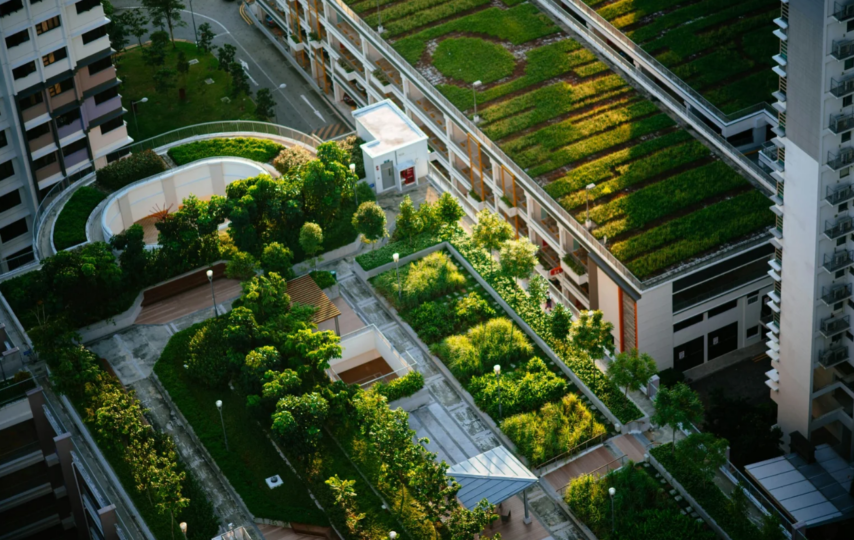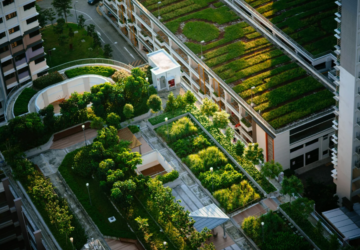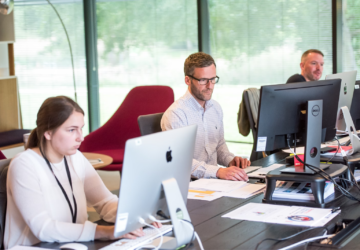In recent years, Green Roofs and Walls in Innovative Land Development have moved from niche features to mainstream solutions for sustainable building and community design. By planting vegetation atop rooftops or on vertical surfaces, developers tackle urban heat, manage stormwater, and create inviting spaces for people and wildlife. This approach brings fresh life to concrete jungles, offering a clear path toward healthier, more resilient cities.
What Are Green Roofs and Walls?
A green roof layers soil and plants over conventional roofing materials. It can range from a thin turf roof supporting mosses to a deep, garden-like landscape with small trees. Conversely, a green wall (or living wall) features plant life growing on specially engineered panels attached to vertical surfaces. Both use waterproof membranes, drainage systems, and a growing medium to keep plants healthy while protecting structural elements below.
Key Benefits
- Temperature Control: Vegetation cools buildings by shading and through evapotranspiration, lowering indoor temperatures and cutting energy use.
- Stormwater Management: Green roofs and walls absorb rainwater, easing the burden on drainage systems and reducing runoff pollution.
- Air Quality Improvement: Plants filter dust and pollutants, enriching the air around structures and improving human health.
- Biodiversity Support: Roof gardens and living walls create habitats for birds, bees, and insects, reconnecting urban dwellers with nature.
- Aesthetic Appeal: Lush greenery softens harsh lines of concrete and steel, crafting visually compelling spaces that attract residents and visitors alike.
Types of Green Roofs
- Extensive Roofs
- Thin soil layer (2–6 inches)
- Supports hardy, drought-tolerant plants like sedum and grasses
- Low maintenance, lightweight, ideal for retrofits
- Thin soil layer (2–6 inches)
- Intensive Roofs
- Deeper soil beds (6–24 inches)
- Accommodates a wide variety of plants, including shrubs and small trees
- Higher maintenance, needs irrigation, often accessible as rooftop parks
- Deeper soil beds (6–24 inches)
- Semi-Intensive Roofs
- Intermediate soil depth (4–10 inches)
- Blends hardy groundcovers with ornamental plants
- Balanced maintenance needs and structural load
- Intermediate soil depth (4–10 inches)
Innovative Land Development Practices
Integrating Green Roofs and Walls in Innovative Land Development celebrates a holistic vision for today’s communities. Projects that adopt Innovative Land Development Practices often combine green infrastructure with smart water management, renewable energy, and community spaces to maximize environmental and social returns.
Types of Green Walls
- Modular Panel Systems: Plants pre-grown in tray-like modules that clip onto a wall frame. Easy to install and replace individual panels.
- Felt or Fabric Systems: Plants rooted in felt pockets that hang directly on the wall. Lightweight and flexible, but require more frequent watering.
- Hydroponic Systems: Circulate nutrient-rich water through pipes for plant growth without soil. Offer precise irrigation control but rely on pumps and electricity.
- In-Situ Growth Systems: Plants grow directly in pockets cut into the wall, often supported by specialized soil mixtures. Provide a seamless look but are challenging to retrofit.
Design and Planning Considerations
- Structural Capacity: Before installation, engineers must verify that the building can support additional weight from soil, plants, and water. Roofs with limited load capacity may require reinforcement or use of lightweight media.
- Waterproofing and Drainage: A robust waterproof membrane and drainage layer prevent leaks and waterlogging. Excess water must flow away safely to avoid structural damage.
- Irrigation Strategy: Depending on climate and plant choice, systems may include drip irrigation, capillary mats, or manual watering. Automated sensors can optimize water use.
- Sunlight Exposure: South- and west-facing roofs and walls receive the most sun, supporting sun-loving species. Shadier aspects call for shade-tolerant plants like ferns.
- Accessibility for Maintenance: Paths, walkways, or removable panels should allow horticulturists to prune, fertilize, and replace plants safely.
Plant Selection and Maintenance
- Native and Adaptive Species: Local plants often thrive with minimal care and support local ecology. Look for drought-resistant grasses, wildflowers, and small shrubs native to the area.
- Layered Planting: Combine groundcovers, perennials, and occasional shrubs to create a resilient plant community that can recover from pests and weather extremes.
- Seasonal Interest: Incorporate evergreens, flowering perennials, and plants with colorful foliage to maintain visual appeal year-round.
- Routine Tasks:
- Inspect waterproofing annually.
- Remove weeds and invasive species regularly.
- Check irrigation outlets and refill reservoirs as needed.
- Replace dead plants promptly to maintain coverage and function.
- Inspect waterproofing annually.
Case Examples
- Urban Oasis Tower: A mixed-use high-rise with tiered green roofs and cascading living walls. This design reduced internal cooling needs by 30% and attracted local wildlife back into the city core.
- Community Park Retrofit: A former parking deck transformed into a public park featuring green roof planters and vertical gardens on surrounding buildings. Residents report improved air quality and a tangible sense of neighborhood identity.
- Eco-Industrial Hub: Warehouse rooftops support solar panels mounted above vegetation. The green roof cools photovoltaic cells, boosting energy output, while the solar arrays provide shade that benefits plant health.
Cost, ROI, and Funding
- Upfront Investment: Green roofs typically cost 10%–20% more than conventional roofs, depending on soil depth and irrigation complexity.
- Long-Term Savings: Energy bills can drop by up to 25%, and roof membranes on green roofs last twice as long due to UV protection. Stormwater fees may decline or incentives may offset installation costs.
- Funding Options:
- Grants and Rebates: Many municipalities offer incentives for green infrastructure.
- Green Bonds: Cities issue bonds earmarked for sustainable projects.
- Public–Private Partnerships: Developers collaborate with local governments or NGOs to share costs and benefits.
- Grants and Rebates: Many municipalities offer incentives for green infrastructure.
Regulatory and Policy Drivers
- Stormwater Regulations: Municipalities increasingly require on-site stormwater retention, making green roofs and walls a compelling compliance tool.
- Green Building Certifications: Programs like LEED and BREEAM award points for vegetated roofing and façade systems. These credentials enhance property value and marketability.
- Zoning Incentives: Some cities grant extra floor-area allowances or tax breaks for projects featuring significant green infrastructure.
Challenges and Solutions
- Weight Constraints: Where structural capacity is low, lightweight soil alternatives (e.g., expanded shale) can reduce loads by up to 40%.
- Maintenance Burden: Automated irrigation systems with moisture sensors cut manual labor by scheduling watering only when plants need it.
- Plant Mortality: Including a mix of hardy pioneers alongside more sensitive species creates a buffer: if delicate plants fail, tough groundcovers keep the system functional.
- Cold-Climate Frost Heave: Using fibrous soil mixes and frost-resistant species minimizes freeze-thaw damage.
Future Trends
- Vertical Farming Integration: Combining edible crops with ornamental green walls could transform food production in urban areas.
- Smart Sensor Networks: Embedded sensors will monitor moisture, temperature, and plant health, enabling predictive maintenance and water savings.
- Modular Biophilic Systems: Pre-vegetated panels that snap together like building blocks allow rapid installation and easy reconfiguration.
By embracing Green Roofs and Walls in Innovative Land Development, cities can knit nature back into their cores, delivering cleaner air, cooler buildings, and vibrant public spaces. While initial costs and technical hurdles exist, the long-term returns—in energy savings, stormwater management, and community well-being—make living roofs and walls a cornerstone of sustainable design. Forward-thinking developers who adopt these strategies today will shape healthier, greener communities for generations to come.







